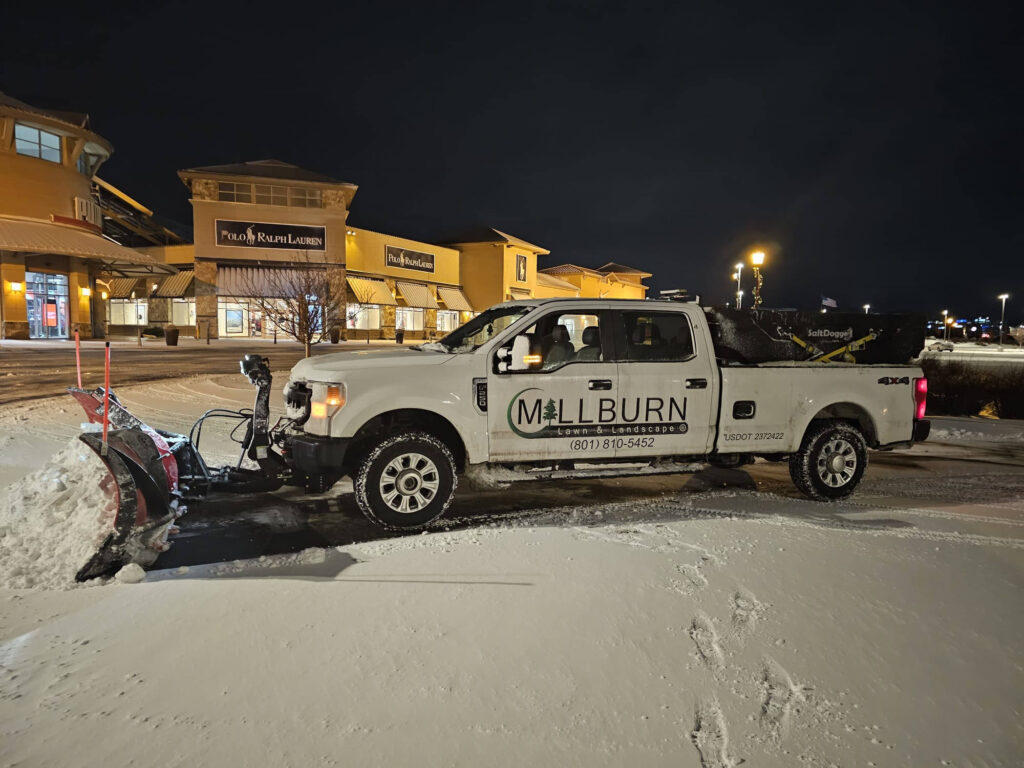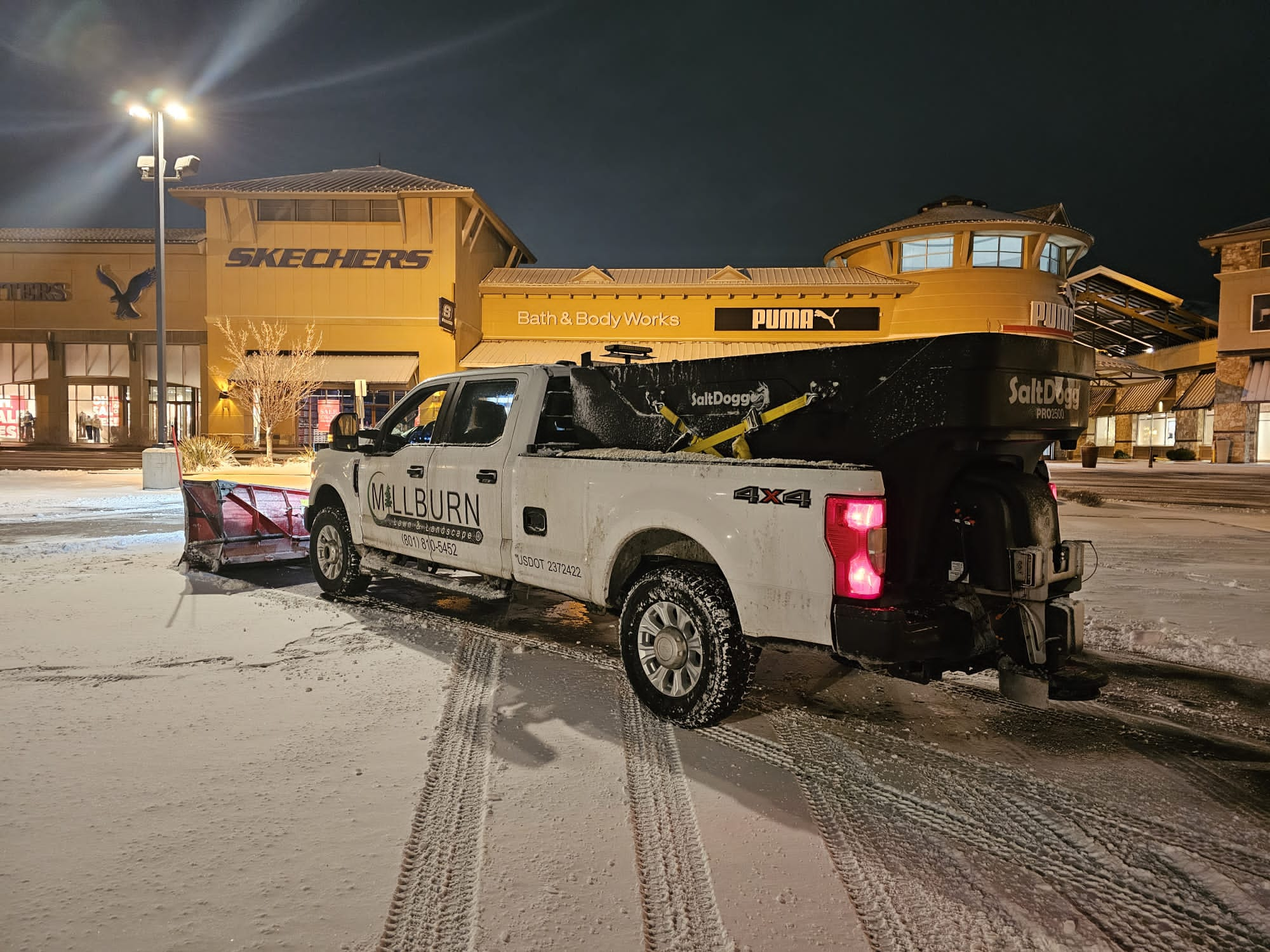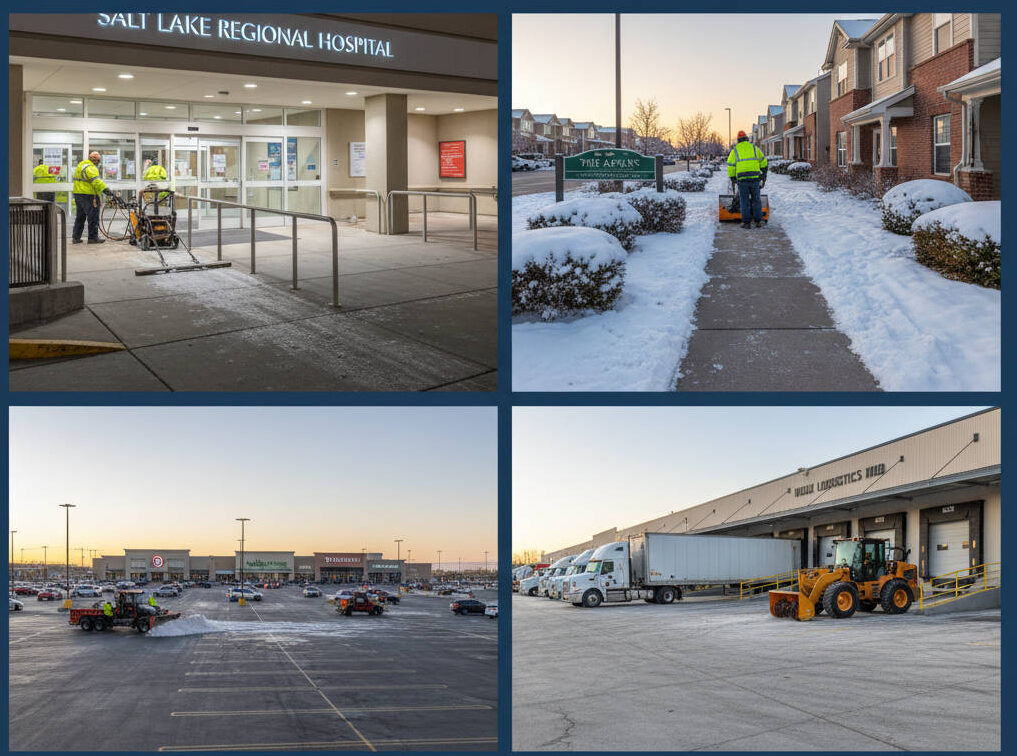The De-Icing Dilemma: Choosing the Right Weapon Against Ice in Salt Lake City
Winter in the Wasatch Front brings breathtaking snow but challenging conditions for property management. Icy sidewalks, ramps, and parking lots pose significant liability risks and operational hurdles for every Salt Lake City commercial property. The solution seems simple: put down salt. However, for professional commercial de-icing services Utah, the choice of material is the single most critical factor determining safety, budget, and long-term property maintenance.
Choosing an ineffective de-icer not only wastes money but also leaves your pavement susceptible to dangerous refreezing, undermining safety efforts. As a property manager, you need an optimized strategy that balances cost with performance, especially when navigating the dramatic temperature swings of Utah’s climate. This guide breaks down the core granular de-icing materials—rock salt, sand, and modern enhanced salts—to help you select the best plan for comprehensive commercial de-icing services Utah.
The Traditional Workhorse: Rock Salt (Sodium Chloride)
Rock salt, or sodium chloride (NaCl), is the most recognized and widely used de-icer. It’s cheap, readily available, and a fixture in most winter maintenance budgets.
Performance, Cost, and Temperature Limits
- How it Works: Rock salt is composed of coarse, crystalline granules. It works by dissolving when it comes into contact with moisture (snow or ice) to form a solution that has a lower freezing point than pure water.
- The Critical Temperature Barrier: The effectiveness of untreated rock salt dramatically decreases as temperatures drop. It struggles to dissolve below 15°F (-9°C). When temperatures consistently dip into the single digits or below, which is common in Salt Lake City during January and February, rock salt ceases to be a reliable de-icer, often sitting idle on the pavement.
- Cost: It is the most economical de-icing material available per ton, making it an attractive low-cost option. However, its performance limits often necessitate heavier application rates or supplementary materials, sometimes eroding the cost savings.
Structural and Environmental Drawbacks
The biggest hidden costs associated with traditional rock salt relate to its long-term damage, which is a key consideration for eco-friendly snow removal Salt Lake City.
- Pavement and Concrete Damage: Rock salt can accelerate the deterioration of concrete and asphalt. The freeze-thaw cycles it encourages, coupled with the salt’s corrosive nature, lead to pitting and scaling—a process called spalling—that shortens the lifespan of driveways and sidewalks.
- Ecological Harm: Salt runoff introduces high levels of chloride into surrounding soil and groundwater. This chloride buildup is toxic to plants and landscaping, causing yellowing, dieback, and eventual death of roadside vegetation. For properties focused on curb appeal and eco-friendly snow removal Salt Lake City, pure rock salt is a high-risk material.
The Low-Cost Abrasive: Sand and Grit
Sand, often applied alone or mixed into rock salt, offers a different, non-chemical solution to slippery surfaces.
Functionality and Limitations
- How it Works: Sand and other gritty abrasives do not melt ice. Their sole purpose is to increase traction and friction on slick surfaces. They are a good temporary measure for emergency spots like steep hills or high-risk areas.
- When to Use: Sand is most effective in extremely low temperatures where chemical de-icers have failed, or when immediate, short-term grip is necessary.
- The Cleanup Conundrum: While initially inexpensive, sand introduces a major drawback: cleanup. Once the ice melts, the sand remains, washing into storm drains and potentially clogging the system. It also gets tracked indoors by foot and vehicle traffic, causing heavy wear and tear on floorings and carpets, significantly increasing janitorial and maintenance costs for the commercial de-icing services Utah operation.
Upgrading Your De-Icer: Why Enhanced Salts Work Better in Utah
Given the performance limitations and damage caused by pure rock salt, professional commercial de-icing services Utah often turn to enhanced granular materials. These advanced salts offer a substantial improvement in temperature performance and reduced environmental impact.
Magnesium Chloride
- Performance: Magnesium Chloride is a highly effective, modern de-icer that is often blended with rock salt or used in its purified granular form. It remains effective down to approximately -15°F (depending on concentration and formulation). This low operational temperature makes it a superior choice for sustained winter safety in the cold Salt Lake City climate.
- Reduced Impact: Magnesium Chloride is generally regarded as less corrosive and less damaging to concrete and landscaping than traditional sodium chloride, making it a viable component of any eco-friendly snow removal Salt Lake City program.
Calcium Chloride
- Performance: Calcium Chloride is another high-performance salt. It is hygroscopic (it readily absorbs moisture from the air), which helps it start melting ice quickly. Calcium Chloride is capable of melting ice in even colder temperatures than Magnesium Chloride, working effectively below -20°F.
- Drawbacks: While highly effective, Calcium Chloride can be one of the more expensive de-icing materials and may leave a slightly slippery residue if over-applied.
For optimal, budget-conscious commercial de-icing services Utah, the strategy involves using rock salt only when temperatures permit (above 20{F}) and switching immediately to Magnesium Chloride or a blended/treated salt product when the forecast predicts the serious cold snaps common to the region.
Millburn Landscape’s Strategy for Optimized De-Icing
At Millburn Lawn and Landscape, we recognize that a one-size-fits-all approach fails in the unpredictable Utah winter. Our strategy for commercial de-icing services Utah focuses on material efficiency and safety by always choosing the highest-performing and least-damaging material suitable for the temperature.
- Temperature-Based Material Selection: We constantly monitor pavement temperatures, applying Magnesium Chloride-enhanced products or high-purity salts when the cold dips low and reserving rock salt for milder conditions. This ensures maximum melting efficiency.
- Strategic Application: We focus on precise application rates to minimize runoff and product waste. Targeted coverage on walkways, ramps, and primary entrances is prioritized to mitigate liability risks without saturating the surrounding landscape.
- Risk Mitigation: By choosing less corrosive salt vs other de-icers options, we protect your concrete investment and reduce the long-term structural and environmental toll, supporting truly effective eco-friendly snow removal Salt Lake City.

Stop risking liability and structural damage with outdated rock salt strategies!
Ensure your commercial property is safe and compliant with a data-driven de-icing plan that uses the right product at the right time. Protect your assets with optimized commercial de-icing services Utah from the experts.
Contact Millburn Lawn and Landscape today for a custom de-icing assessment for your Salt Lake City property.
Call (801) 810-5452 or visit https://millburnlandscape.com/ to secure your tailored winter safety strategy!
Frequently Asked Questions (FAQ) on De-Icing Materials
Q1: How cold can it get before rock salt stops working effectively?
A: Standard rock salt (Sodium Chloride) becomes highly inefficient when temperatures drop below 15°F (-9°C). Below this, we recommend switching to enhanced salts like Magnesium Chloride or Calcium Chloride for effective commercial de-icing services Utah.
Q2: Are there truly eco-friendly snow removal Salt Lake City options?
A: While all chlorides have an environmental impact, modern materials like Magnesium Chloride are significantly less corrosive and require lower application rates than traditional rock salt, minimizing runoff and damage to landscaping, making them a “friendlier” choice.
Q3: What are the main drawbacks of using sand on a commercial property?
A: Sand’s primary drawback is that it does not melt ice (it only provides traction) and creates a massive cleanup problem when the snow melts, leading to clogged drains and costly interior wear and tear.
Q4: Is a blended or enhanced salt product worth the extra cost?
A: Absolutely. While the upfront cost may be higher, enhanced salts (like Magnesium Chloride or Calcium Chloride) work at much lower temperatures and require far less product to achieve a clear, safe surface. This improved performance and material efficiency translate into lower overall operational costs and higher safety, securing the best value for your commercial de-icing services Utah.



